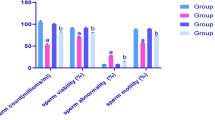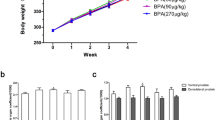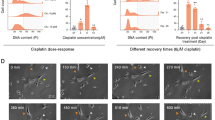Abstract
There is abundant evidence that inhibitors of prostaglandin (PG) biosynthesis might increase the radioresponse of certain tumour cells. This study investigated specific PG binding sites, eicosanoid production as well as intracellular cAMP levels in cultured human hypernephroma cells derived from 11 patients upon nephrectomy. Scatchard analyses of the binding data revealed specific PGE1-, PGE2- as well as PGI2-binding sites (PGE1: Bmax = 755 +/- 206 fmol mg-1 protein, Kd = 3.7 +/- 2.7 nM PGE2: Bmax = 494 +/- 221 fmol mg-1 protein, Kd = 4.2 +/- 2.5 nM; PGI2: Bmax = 693 +/- 164 fmol mg-1 protein, Kd = 6.0 +/- 4.5 nM). Significant (P < 0.01) increase in PG binding sites expressed on human hypernephroma cells (PGE1: Bmax = 1084 +/- 303 fmol mg-1 protein, Kd = 2.8 +/- 1.3 nM; PGE2: Bmax = 663 +/- 309 fmol mg-1 protein, Kd = 2.2 +/- 1.5 nM; PGI2: Bmax = 1021 +/- 391 fmol/protein, Kd = 4.2 +/- 3.6 nM) and inhibition of PG biosynthesis (TXB2: -82.5%, PGE2: -87.5%. PGD2: -80.6%, PGF2: -81.3%) were found after acetylsalicylic acid (ASA)-treatment (0.5 mg 10(-6) cells for 24 h). Following irradiation (60Co, 1.0 Gy/min-1 over 10(min), PG binding sites (PGE1: Bmax = 266 +/- 153 fmol mg-1 protein, Kd = 5.0 +/- 5.0 nM; PGE2: Bmax = 148 +/- 66 fmol mg-1 protein, Kd = 4.7 +/- 3.6 nM; PGI2: Bmax = 325 +/- 194 fmol mg-1 protein, Kd = 6.8 +/- 7.1 nM) were significantly (P < 0.01) diminished. However, irradiation had no significant effect on PG binding sites in ASA-pretreated cells (PGE1: Bmax = 699 +/- 240 fmol mg-1 protein, Kd = 3.5 +/- 1.8 nM; iloprost: Bmax = 766 +/- 452 fmol mg-1 protein, Kd = 3.2 +/- 2.2 nM). Although there was no significant difference in the basal values for cAMP between control and ASA-treated group cells, the PG-induced cAMP-production was less pronounced in the control group. Taken together, the findings suggest that ASA may modify the radioresponse of cultured human hypernephroma cells by preventing the decrease of PG binding sites induced by irradiation.
This is a preview of subscription content, access via your institution
Access options
Subscribe to this journal
Receive 24 print issues and online access
$259.00 per year
only $10.79 per issue
Buy this article
- Purchase on Springer Link
- Instant access to full article PDF
Prices may be subject to local taxes which are calculated during checkout
Similar content being viewed by others
Author information
Authors and Affiliations
Rights and permissions
About this article
Cite this article
Li, SR., Yang, Q., Wandl, E. et al. Acetylsalicylic acid (ASA) protects the prostaglandin-cAMP-system of human hypernephroma cells against irradiation-induced alterations. Br J Cancer 68, 695–701 (1993). https://doi.org/10.1038/bjc.1993.412
Issue Date:
DOI: https://doi.org/10.1038/bjc.1993.412



